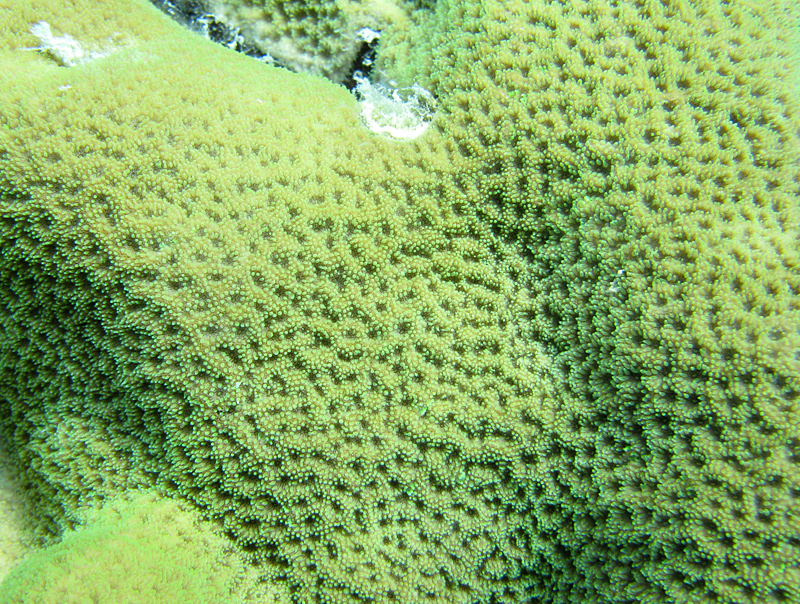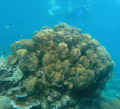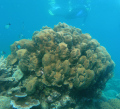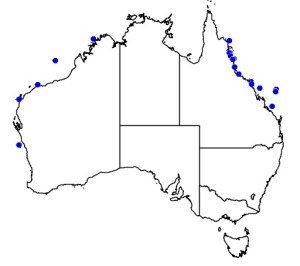�
�
�
���
Coscinaraea exesa
Kingdom
Animalia
Phylum
Cnidaria
Class
Anthozoa
Order
Scleractinia
Family
Coscinaraeidae
Genus
Coscinaraea
Species
Coscinaraea exesa
Colours
Distinguishing features
A coral that forms sub-massive colonies. Corallites have poorly defined walls and a granulated appearance, however they are more distinct than Psammocora digitata. Colonies are coloured dark brown. Polyps are often extended during the day.
Size
- Size data has not been obtained.
Synonyms
Distribution
Distribution and habitat preferences
Shallow reef fronts and reef flats.
Can be found in most shallow habitats around Lizard Island.
Behaviour
Recent morphological and molecular research has indicated that the Siderastreidae are not monophyletic, with the genera Psammocora and Coscinaraea have more affinity with the Fungiids than other genera of Siderastreidae.
This species is a gonochoric broadcast spawner.
Web resources
References
- Baird, A.H., J.R. Guest and B.L. Willis (2009). Systematic and biogeographical patterns in the reproductive biology of scleractinian corals, Annual Review of Ecology, Evolution and Systematics, 40: 551-571.
- Benzoni, F., F. Stefani, J. Stolarski, M. Pichon and P. Galli (2007). Debating phylogenetic relationships of the scleractinian Psammocora: molecular and morphological evidences, Contributions to Zoology, 76: 33-52.
- Stefani, F., F. Benzoni, M. Pichon, C. Cancelliere and P. Galli (2008). A multidisciplinary approach to the definition of species boundaries in branching species of the coral genus Psammocora (Cnidaria, Scleractinia), Zoologica Scripta, 37: 71-91.
- View all references









